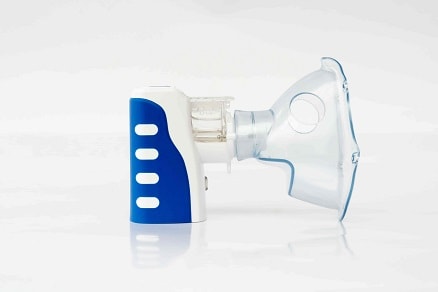Inhalation

Metered-dose Inhalers
Metered-dose inhaler product contain therapeutically active ingredients dissolved or suspended in a propellant, a mixture of propellant, or a mixture of solvents, propellants, and/or other excipients in compact pressurized aerosol dispensers. An MDI product may discharge up to several hundred metered doses of one or more drug substances. Depending on the product, each actuation may contain from a few microorganisms (mcg) up to milligrams (mg) of the active ingredients delivered in a volume typically between 25 and 100 microliters.
Although similar in many features to other drug products, MDIs have unique differences with respect to formulation, container, closure, manufacturing, in-process and final controls, and stability. These differences need to be considered during the development program because they can affect the ability of the product to deliver reproducible doses to patients over the life of the product to deliver reproducible doses to patients over the life of the product as well as the product’s efficacy. Some of the unique features of MDIs are listed below:
- The container, the valve, the actuator, the formulation, any associated accessories (e.g., spacers), and protective packaging collectively constitute the drug product. Unlike most other drug products, the dosing and performance and, therefore, the clinical efficacy of a MDI may be directly dependent on the design of the container and closure system (CCS).
- The fraction of the formulation delivered to the patient consists of a mixture of micronized (or solubilized) drug substance in the desired physical form, which may be within a residual matrix of oily excipient material, propellant and/or solvent.
- Fixed portions of medication from a multi dose container can be directly administered to the patient without contamination or exposure of the remaining material under normal use conditions. Conversely, portions of the immediate container’s content cannot be removed from a pressurized container for further modification or manipulation.
- The aerosolization of materials from a pressurized container is a complex and rapid sequence of events. When the content of the metering chamber is released, it undergoes volume expansion and forms a mixture of gas and liquid before being discharged as a jet through the orifice of the actuator. Within the expanding jet, the droplets undergo a series of processes. Subsequent to the aerosolization and dispersion of the drug product into a multiple of droplets, and during the propulsion of these droplets from the actuator to the biological target, the drug substance particles in the droplets become progressively more concentrated due to the rapid evaporation of the volatile propellant components.
- The concept of classical bioequivalence and bioavailability is usually not applicable for oral inhalation aerosols. The dose administered is typically so small that blood or serum concentrations are generally undetectable by routine analytical methods. Moreover, bio equivalency studies are complicated by the fact that only approximately 10-15 percent of the dose reaches the biological target. The remainder of the dose, trapped in the mouth and pharynx, is swallowed and absorbed through the gastrointestinal (GI) tract.
- Clinical efficacy assessment of inhalation aerosols requires consideration of several parameters, such as:
- Variability in the disease itself.
- Administration skills and practices, for example, breath holding and its duration, patient inspiratory flow rate, discharging either via closed lips around the mouthpiece or into the open mouth, coordination of aerosol discharge and inhalation by the patient, add-on devices, proper priming of the valve and cleaning practices for the actuator, proper handling and fitting of the actuator to the valve stem;
- Presence of other drugs which may exacerbate differences between products;
- Drug product variability due to physical characteristics and controls of the drug substance, optimized formulation, valve and actuator design, manufacturing process and in-process controls.
Dry Powder Inhalers (DPIs)
Current designs of DPI include pre-metered and device-metered DPIs, both of which can be driven by patient inspiration alone or with power-assistance of some type. Pre-metered DPIs contain previously measured doses or dose fractions in some type of units (e.g., single or multiple presentations in blister, capsules, or other cavities) that are subsequently inserted into the device during manufacture or by the patient before use. The dose may be inhaled directly from the pre-metered unit or it may be transferred to a chamber before being inhaled directly from the pre-metered unit or it may be transferred to a chamber before being inhaled by the patient. Device-metered DPIs have an internal reservoir containing sufficient formulation for multiple doses that are metered by the device itself during actuation by the patient. The wide array of DPI designs, many with characteristics unique to the design, will present challenges in developing information in support application. Regardless of the DPI design, the most crucial attributes are the reproducibility of the dose and particle size distribution.
These are the key distinctions of DPIs
- The device with all of its parts, including any protective packaging (e.g., overwrap), and the formulation together constitute the drug product. Unlike most other drug products, the dosing and performance and therefore the clinical efficacy of a DPI may be directly dependent on the design of the device.
- The portion of the formulation that is delivered by inhalation to the patient consists of the neat drug substance controlled to a suitable particle size distribution (e.g., micronized, spray-dried) or the drug substance contained within a matrix of excipients.
- Energy is required for dispersion and aerosolization of the formulation and the drug substance. Whereas MDIs use energy stored in a liquefied gas propellant under pressure for aerosolization and dispersion. DPIs may rely on several energy sources, including energy from patient inspiration, from compressed gas, or from a motor-driven impeller.
- Whereas MDIs administer doses of the drug substance formulation to the patient without contamination of the remaining formulation under normal use conditions, this is not necessarily the case with DPIs. In particular, device-metered DPIs can be susceptible to contamination (e.g., moisture, microbial) of the remaining dose. Contamination aspects under both in-use and abuse conditions should be considered during development of the drug product.
- In DPIs, complex and subtle interactions may occur between the drug substance, carrier(s), and components of the container and closure system that significantly affect the safety and effectiveness of the drug product.



